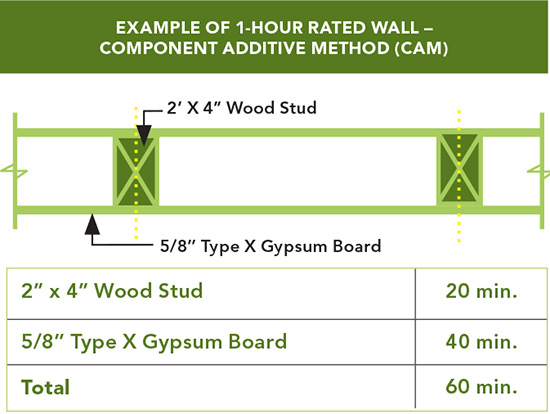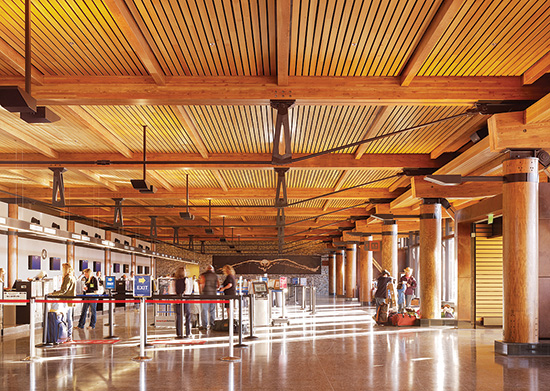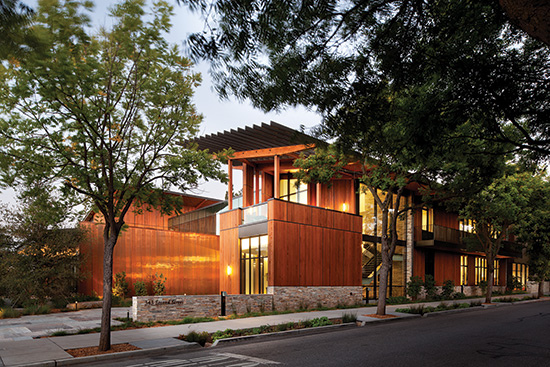Designing for Fire Protection
Design Tools for Assemblies
Many sources are available for identification and selection of tested fire-resistance rated assemblies, including testing laboratories, evaluation reports, manufacturer's technical literature and industry publications. Fire-resistance rated wood-frame assemblies can be found in listings contained in such publications as:
▶ American Wood Council Design for Code Acceptance (DCA) 3 - Fire Resistance-Rated Wood-Frame Wall and Floor/Ceiling Assemblies
▶ Underwriters Laboratories (UL) Fire Resistance Directory
▶ Intertek Testing Services’ Directory of Listed Products
▶ Gypsum Association’s Fire Resistance Design Manual
Fire-resistance rated assemblies may also be selected from one of the prescriptive assemblies provided in IBC Section 721 based on ASTM E 119 or UL 263 test results, or by calculating an assembly’s capacity using IBC Section 722. AWC DCA3 is also helpful in determining the fire-resistance rating of wood-frame wall and floor/ceiling/roof assemblies, and is available free at www.awc.org.
To permit use of “non-listed” assemblies, IBC Section 722.6 also recognizes a methodology for calculating the fire endurance of load-bearing and non-load-bearing wood assemblies (floor, wall, ceiling and roof assemblies) through a calculation methodology called Component Additive Method (CAM). CAM was developed in the early 1960s by the Fire Test Board of the National Research Council of Canada and validated through full-scale wood-framed assembly fire tests.
CAM calculates fire endurance to equal
the sum of:
▶
the contribution of the fire exposed membrane,
▶
the time to failure of the framing members, and, if applicable,
▶ additional protection due to the use of cavity insulation or reinforcement of the membrane.
Section 722.6 contains the procedures by which fire-resistance ratings of wood assemblies can be established using this calculation method. AWC’s publication DCA 4 – Component Additive Method (CAM) for Calculating and Demonstrating Assembly Fire Resistance provides a history of the method and an in-depth explanation of its use and application.

Courtesy: American Wood Council

Architect: Gensler. Structural Engineer: Martin/Martin. Photo: Matthew Millman.
For the Jackson Hole Airport in Wyoming, designers chose wood because of its varied grain and color palette, as well as its ability to perform structurally under a variety of loading conditions. The inherent fire performance of heavy timber construction was vital in allowing the wood to be exposed. Winner of a 2015 WoodWorks Wood Design Award.

Architect: EHDD. Structural engineer: Tipping Mar Structural. Photo: Jeremy Bittermann.
At the David & Lucile Packard Foundation company headquarters, wood was an important part of the strategy to achieve LEED Platinum certification.









